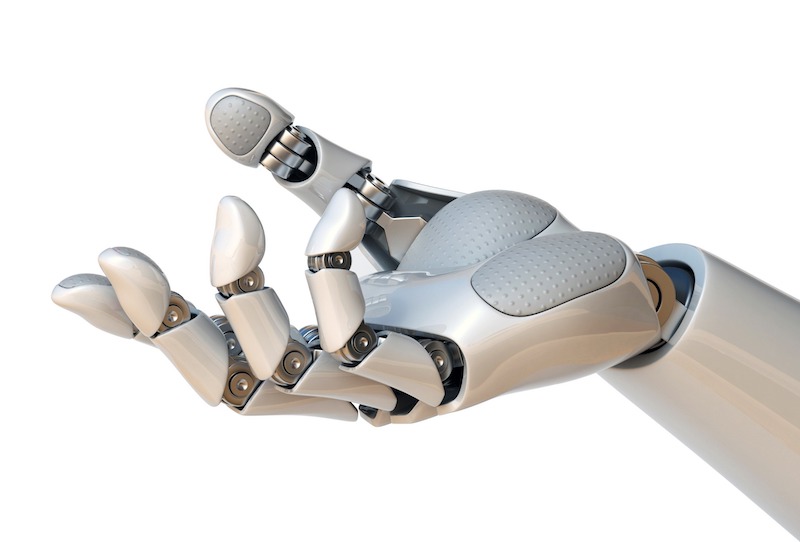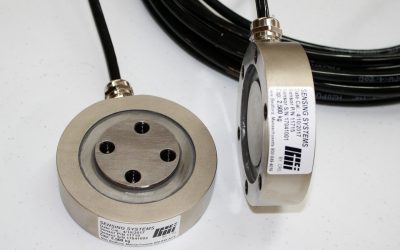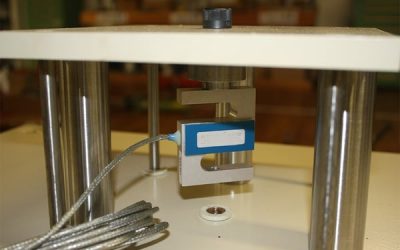Force-Sensing Prosthetic Fingers
Industry Insights
Force-Sensing Prosthetic Fingers

Micro-Measurements® strain gage sensors are used on artificial fingers of prosthetic robotic arms to enable the user to sense and control the gripping force. Electrical connections from the strain gages terminate at the user’s nervous system, allowing the human brain to monitor and control the gripping force. The robotic arm was developed by the U.S. Department of Defense– for the purpose of advancing the state of the art of prosthetics – to ensure wounded service members receive the best possible treatment.
Company / Institute: Sensing Systems Corportion
Industry / Application Areas: Medical, prosthetics, robotics
Products Used:
- EA-06-031EC-350 & EA-06-015DJ-120 Strain Gages
- M-Bond 610 Strain Gage Adhesive
- M-Coat C Coating
- 134-AWP, #34 AWG Wire
The Challenge
In a quest to build a better prosthetic robotic arm, DARPA (U.S. Defense Advanced Research Projects Agency) sought the help of top technological companies and universities to duplicate the functionality of the human arm and five-fingered hand, with an opposable thumb, wrist, elbow and shoulder. This application required a reliable, proven and compact solution to repeatably sense small forces in order to provide feedback and small motor control for the user.
The Solution
Instead of incorporating an off-the-shelf force transducer that would not fit in the tight spaces or would overly burden the prosthetic arm with excessive weight, a proven technology and expert service was required to transducerize the existing components. Sensing Systems Corporation in New Bedford, Massachusetts, offered the ideal solution by incorporating their design and sensor installation utilizing Micro-Measurements® strain gage sensors.
The User Explains
This application in particular posed many technical challenges. The finished sensor contained three full-bridge circuits of four strain gages each. The physical constraints of the application, fitting multiple force measurements on a part the size of a fingertip, required using as small of a strain gage as possible. Micro-Measurements® is the only manufacturer of strain gages suitable for this application. Micro-Measurement’s available strain gage geometries and patterns far exceed their competitors’ offerings. The Micro-Measurements® strain gages available off the shelf not only made this sensor technically feasible, they worked flawlessly in terms of sensor combined errors and measurement crosstalk. In addition to the wealth of Micro-Measurements® strain gage and accessory offerings, their field and application engineers will go above and beyond to solve their customers’ technical problems. If an existing product does not exist, they will work with you to come up with a custom solution.
“Micro-Measurements® made this sensor technically feasible – their strain gages worked flawlessly in terms of sensor combined errors and measurement crosstalk”
Acknowledgement:
Micro-Measurements® thanks Ricardo Bermudez for this article and the permission to share it with our customers and colleagues.
Founded in 1990, Sensing Systems specializes in strain gage measurement products and services. Applying their expertise in strain gage based technologies, Sensing Systems designs, manufactures, and tests force and torque sensors of all sizes and capacities for any application. Additionally, their field technicians have over 100 years combined experience traveling the world performing strain gage measurement installations for the power, oil and gas, aerospace, infrastructure, and medical industries.
Authors: Ricardo Bermudez, President, Sensing Systems Corporation | Peter Bermudez, Engineer, Sensing Systems Corporation | Mark Denison, Micro-Measurements Field Engineer, Andruss-Peskin Corp.
Industry Insights
Strain Gauge vs. Load Cell: What’s the Difference?
Industry InsightsUnderstanding Two Essential Tools for Precision...
Torque Sensor & Load Cell Calibration
Calibration is the comparison of a load cell or torque sensor to a reference standard with a known accuracy. The goal of calibration is to determine the accuracy of the instrument, establish traceability…
Submersible and Underwater Load Cells and Torque Sensors for Marine Applications
We have pioneered underwater sensing technologies and can adapt any of our standard load cell or torque sensor designs to function in marine environments.



